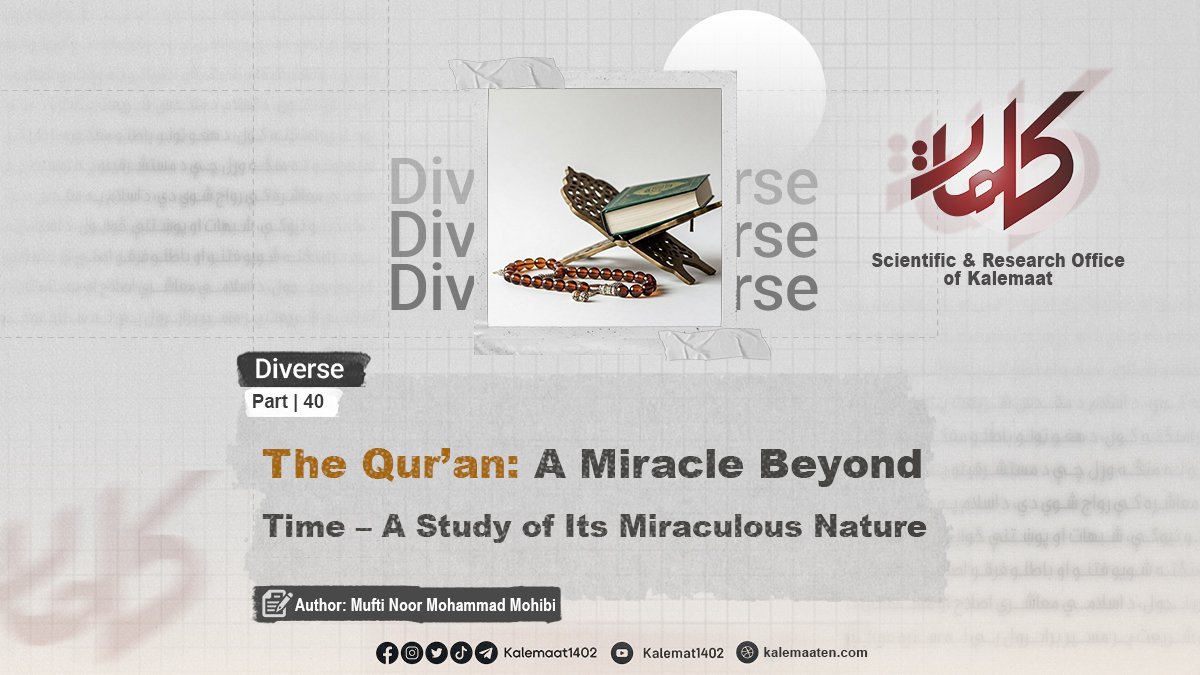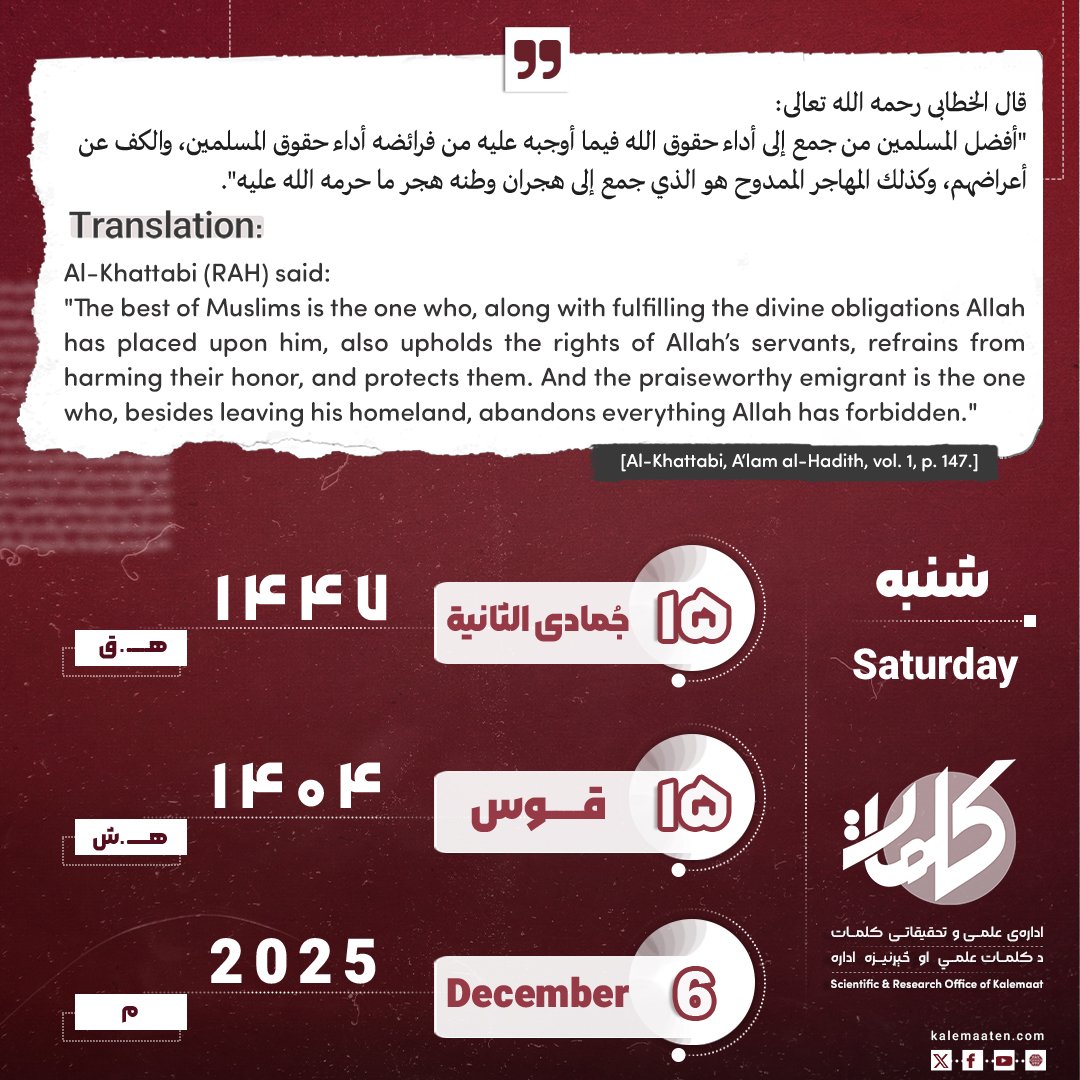
Author: Mufti Noor Mohammad Mohibi
The Quran: A Miracle Beyond Time- A Study of Its Miraculous Nature (part 40)
The Scientific Miracle of the Holy Quran in the Light of Embryology
The Holy Quran, as the last divine book, in addition to its guiding and educational aspects, also contains precise scientific references on various subjects. One of the manifestations of the scientific miracle of the Quran is its references to the “process of development of the human embryo” in the mother’s womb. These references were revealed at a time when mankind had no scientific knowledge of the biological processes of embryo development. Today, with the advancement of biological sciences, especially the science of “embryology,” they are surprisingly consistent with scientific findings.
In this section, the correspondence of the stages mentioned in the Holy Quran and the Prophetic Hadiths with new scientific findings in embryology will be examined, and it will be shown how the precise use of conjunction letters in Quranic verses demonstrates one of the aspects of the linguistic and scientific miracle of the Holy Quran.
Stages of embryo development in the Holy Quran
There are verses in Surah al-Mu’minun that clearly and precisely describe the different stages of the development of the embryo: “وَلَقَدۡ خَلَقۡنَا ٱلۡإِنسَٰنَ مِن سُلَٰلَةٖ مِّن طِينٖ ۱۲ ثُمَّ جَعَلۡنَٰهُ نُطۡفَةٗ فِي قَرَارٖ مَّكِينٖ ۱۳ ثُمَّ خَلَقۡنَا ٱلنُّطۡفَةَ عَلَقَةٗ فَخَلَقۡنَا ٱلۡعَلَقَةَ مُضۡغَةٗ فَخَلَقۡنَا ٱلۡمُضۡغَةَ عِظَٰمٗا فَكَسَوۡنَا ٱلۡعِظَٰمَ لَحۡمٗا ثُمَّ أَنشَأۡنَٰهُ خَلۡقًا ءَاخَرَۚ فَتَبَارَكَ ٱللَّهُ أَحۡسَنُ ٱلۡخَٰلِقِينَ ۱۴ ” Translation: “We created human from an extract of clay. Then We made him a drop of water and placed him in a firm place (in the womb). Then We made the drop of water into a clot of blood, and the clot into a lump of flesh, and the lump into bones, and We clothed the bones with flesh. Then We will give him a new creation and bring him into another creation. Exalted is the station and blessed is Allah, the Best of measurers and creators.” [Mu’minun: 12-14]
In these verses, the following stages in the creation of human are described in order:
1.( سلالة من طین ) A lineage of clay: The initial creation from the essence of clay.
-
نطفه فی قرار مکین) ) Sperm in a stable place: Transition to the sperm stage, which settles in a stable location, the uterus.
-
(علقه) Alaqah: The transformation of the sperm into something sticky like clotted blood.
-
(مضغه) Mozqah: The transformation of the Alaqah into a chewed substance.
-
(عظام) Izaam: The formation of bones.
-
(لحم) Lahm: The covering of the bones with flesh.
-
(خلق آخر) Final creation: The beginning of the formation of human identity and the unique characteristics of each individual.
The miracle in the use of the conjunctions: «ثمّ» and «فاء»
One of the very subtle and at the same time scientific linguistic points found in these verses is the way in which the “conjunctions” are used, each of which has its own specific meaning:
«ثمّ» : indicates order with “time interval”.
«فاء»: indicates order with “speed and continuity”.
In the above verse:
From “sperm to Alaqah” the word «ثمّ» is used:«ثُمَّ خَلَقۡنَا ٱلنُّطۡفَةَ عَلَقَةٗ» From “Alaqah to Mozqah” and the subsequent stages, the word «فاء» is used: «فَخَلَقۡنَا ٱلۡعَلَقَةَ مُضۡغَةٗ فَخَلَقۡنَا ٱلۡمُضۡغَةَ عِظَٰمٗا فَكَسَوۡنَا ٱلۡعِظَٰمَ لَحۡمٗا» This linguistic difference in expression is based on the real difference in the “speed and manner of embryo development” which is fully confirmed today in embryology.
Scientific findings on the stages of embryo development
According to scientific and specialized studies in the field of embryology, the stages of fetal development are as follows:
In the “first two weeks after fertilization,” the fertilized egg cell (zygote) begins cell division and implants in the uterus. This stage is not accompanied by rapid growth; rather, it is a stage for “fixation and attachment of the embryo to the uterine wall.”
At this stage, the embryo remains in the form of a two-layered cell sheet and the growth of organs has not yet begun.
After the end of this stage, the embryo enters a more rapid growth stage and structural changes begin; in which “the Alaqah, the Mozqah, the bone, and the flesh” are formed sequentially and rapidly.
This time interval between the sperm and the Alaqah, which lasts more than “two weeks,” is exactly what the Holy Quran has referred to with the word «ثمّ». While the other stages are expressed continuously and without significant time gaps, with the letter. «فاء»
Accurate matching of embryology with prophetic hadith
It is narrated in an authentic hadith from Abdullah bin Masoud (may Allah be pleased with him) that the Holy Prophet (peace be upon him’), said: “إذا مر بالنطفة ثنتان وأربعون ليلة، بعث الله إليها ملكا. فصورها وخلق سمعها وبصرها وجلدها ولحمها وعظامها. ثم قال: يا رب! أذكر أم أنثى؟ فيقضي ربك ما شاء. ويكتب الملك. ثم يقول: يا رب! أجله. فيقول ربك ما شاء ويكتب الملك. ثم يقول: يا رب! رزقه. فيقضي ربك ما شاء. ويكتب الملك. ثم يخرج الملك بالصحيفة في يده. فلا يزيد على ما أمر ولا ينقص.” Translation: “When forty-two nights have passed over the sperm [congealed in the mother’s womb], Allah Almighty sends an angel to it. The angel shapes the sperm and creates its hearing, sight, skin, flesh and bones. Then he says: O Allah! Is this a male or a female? Allah decrees for it whatever He wills (male or female) and the angel writes it down. Then he says: O Allah! Hen is its time of death? Allah decrees for it whatever He wills and the angel writes it down. Then the angel comes out with a scroll in his hand. He does not add to it or subtract from it.” [1]
This hadith states that on the “forty night after conception,” a divine angel is commissioned to “form” the fetus and determine its physical characteristics such as hearing, sight, flesh, skin, and bones.
Scientifically, ultrasonography images in the “sixth week of pregnancy (42 days)” show that:
Organs such as eyes, ears, mouth, nose, hands, and feet are clearly formed.
The head separates from the body and the body structures transform from their primitive state into a human being.
These scientific observations are in exact accordance with the statements of the prophetic hadith, which indicate the truth of the message of revelation and prophecy. In support of this, the verses of the Quran say: وَمَا يَنطِقُ عَنِ ٱلۡهَوَىٰٓ 3 إِنۡ هُوَ إِلَّا وَحۡيٞ يُوحَىٰ 4 Translation: “And he does not speak of his own desire. That (what he has brought with him and shared with you) is nothing but a revelation sent down (to him).” [Al-Najm: 3-4]
In conclusion, we would like to say: An exact study of the verses of the Holy Quran and the Prophetic Hadiths on the subject of the development of the embryo shows that the Holy Quran has not only been ahead in describing the stages of human creation, but also in using linguistic tools (such as «ثمّ» and «فاء»), it has applied scientific and miraculous precision; a precision that human science has achieved centuries later.
This fact testifies to the scientific miracle of the Holy Quran and its revelation. Such correspondences between religious texts and definitive scientific findings are among the greatest evidences in confirming the mission of the Prophet of Islam (peace and blessings of Allah be upon him) and the divine nature of the Holy Quran. Indeed: فَتَبَارَكَ ٱللَّهُ أَحۡسَنُ ٱلۡخَٰلِقِينَ 14 Translation: “And blessed is Allah, the Best of Measurers and Creators.” [Mu’minun: 14] [2]
Continues…
References:
- Sahih Muslim, Book of Destiny, Chapter: How human is Created in His Mother’s Womb, and the Writing of His Sustenance, Lifespan, Actions, Misery, and Happiness, Hadith No. 2645, Vol. 4, p. 2037, T. Abd al-Baqi.
- Summary from: Encyclopedia of Scientific Miracles in the Qur’an and Sunnah, Vol. 1, pp. 86-88.



